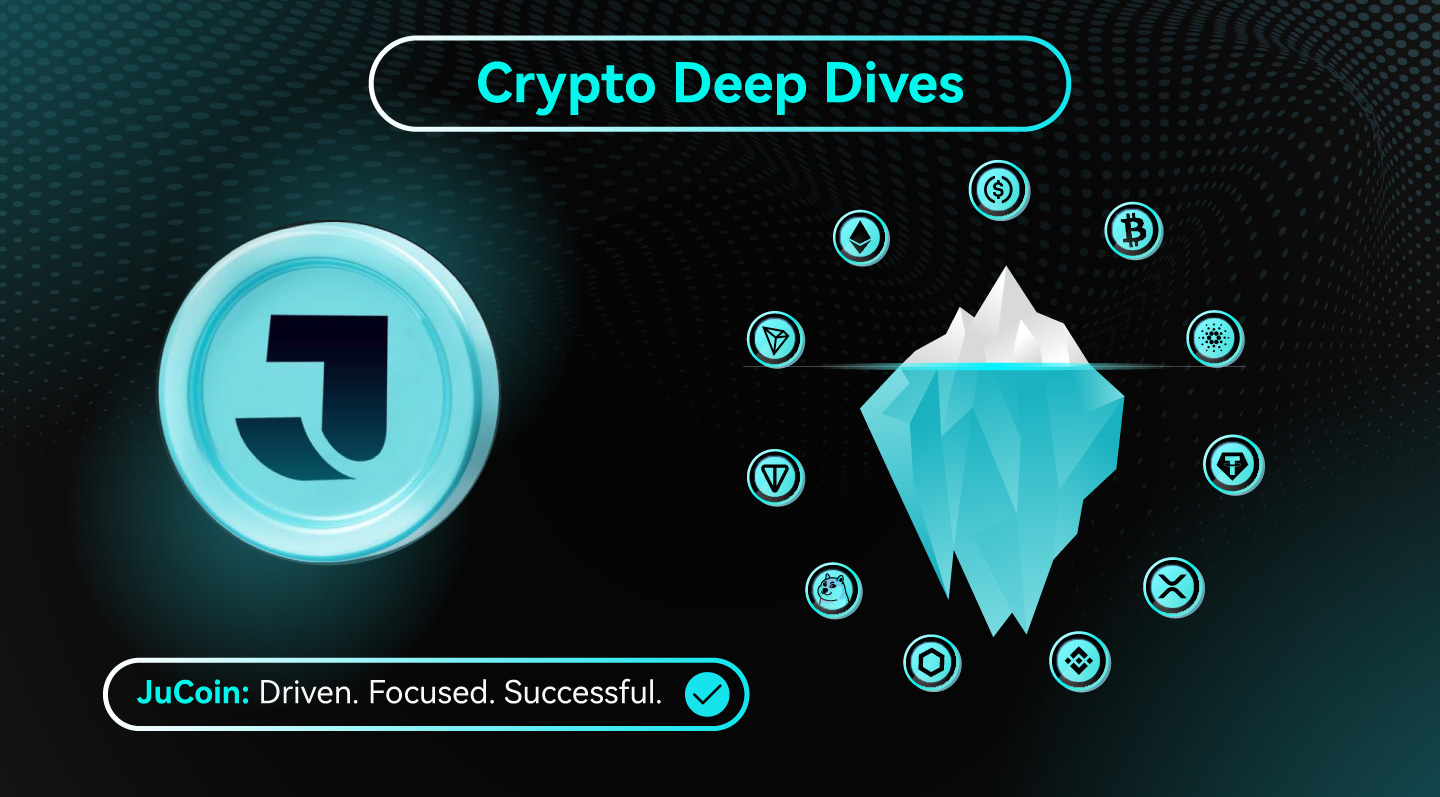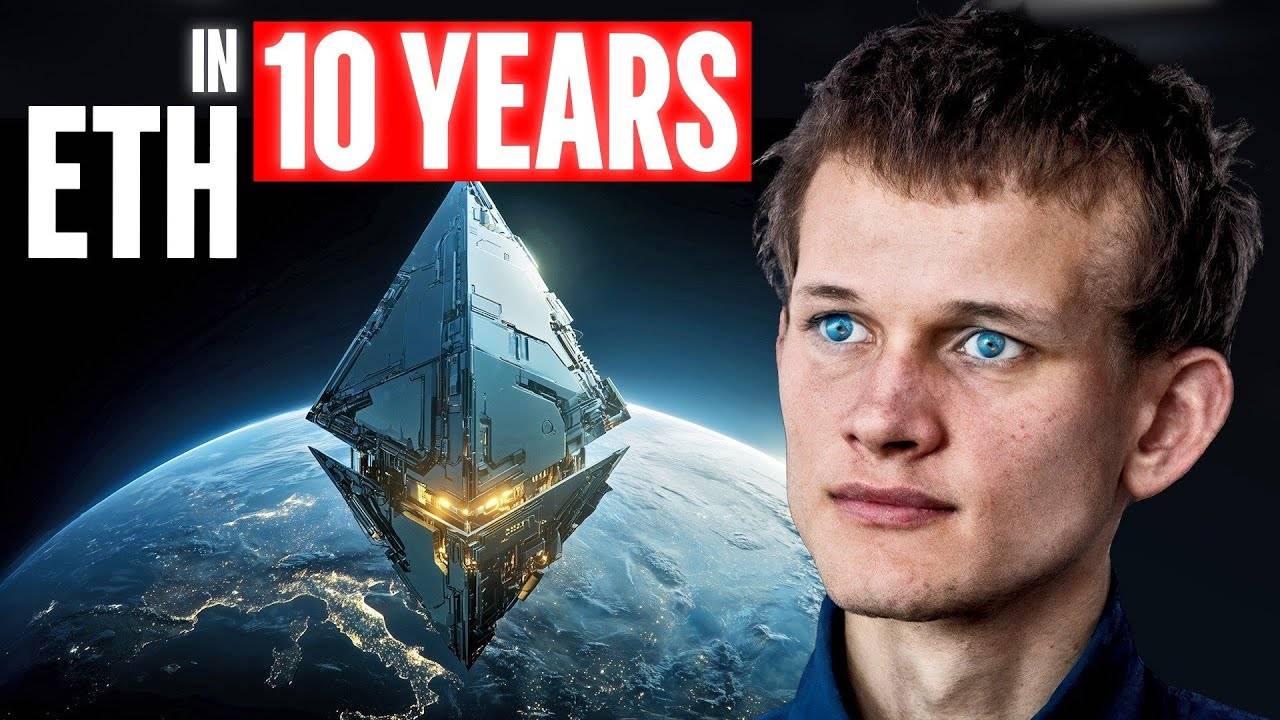
Ethereum co-founder Vitalik Buterin recently delivered his most comprehensive vision for Ethereum’s future in a landmark Bankless interview, marking the blockchain’s 10th anniversary. This Crypto Deep Dives article analyzes Buterin’s bold predictions for Ethereum’s evolution from “world computer” to “world ledger” over the next decade, including revolutionary privacy implementations, Layer 1 scaling strategies, and the strategic role of ETH treasury companies in the ecosystem’s maturation.
Summary: Vitalik Buterin outlines Ethereum’s transformation into a “world ledger” with privacy-by-default features, 10,000 TPS scaling through ZK technology, and strategic support for ETH treasury firms while warning against excessive leverage risks.
Vitalik Buterin’s World Ledger Vision: Ethereum’s Identity Evolution
Vitalik Buterin has officially repositioned Ethereum’s core narrative, moving away from the abstract “world computer” concept toward the more concrete “world ledger” vision. This strategic reframing reflects Ethereum’s focus on becoming “the platform that stores civilization’s assets and records, the base layer for finance, governance, high-value data authentication, and more”.
The world ledger concept provides clearer utility and market positioning compared to the broader world computer metaphor. As Buterin explained in the interview, this repositioning emphasizes Ethereum’s role as a global registry for property rights, financial instruments, and critical data verification systems.
Key Benefits of the World Ledger Framework:
- More concrete value proposition for institutional adoption
- Clear differentiation from general-purpose computing platforms
- Enhanced focus on economic primitives and asset management
- Better alignment with regulatory frameworks requiring transparent record-keeping
This conceptual shift coincides with growing institutional interest, including BlackRock’s recent endorsement of Ethereum’s Layer-1 protocol as the “master ledger for the world”, highlighting its transparency, neutrality, and censorship resistance capabilities. According to CoinDesk coverage, this repositioning addresses critical concerns about maintaining Ethereum’s decentralized values amid mainstream adoption.

Ethereum Privacy Roadmap: Vitalik Buterin’s Cypherpunk Renaissance
Buterin dedicated significant interview time to outlining an ambitious privacy roadmap that represents Ethereum’s return to its cypherpunk roots. This initiative aims to make privacy a default feature rather than an opt-in service, fundamentally changing how users interact with the blockchain.
The privacy transformation centers on three core pillars:
Vitalik’s Privacy-by-Default Wallet Integration Strategy
Current Ethereum privacy solutions require specialized “privacy wallets,” creating friction and limiting adoption. Buterin envisions privacy becoming “deeply integrated at the protocol level, allowing transactions, smart contracts, and network interactions to be inherently confidential”.
The Ethereum Foundation has initiated development work to integrate privacy features directly into mainstream wallets like MetaMask, enabling users to maintain both public and private balances seamlessly. This approach eliminates the need for separate privacy-focused applications while maintaining user sovereignty.
Ethereum ZK Technology Implementation Plans
ZK technology has evolved from being “decades away” to becoming “developer-friendly” and “on the cusp of being usable for consumer applications”. Ethereum’s privacy roadmap leverages these advances to create programmable privacy solutions that transcend the traditional “anonymous but risky” versus “KYC’d therefore safe” dichotomy. Research from industry experts emphasizes that privacy must become a core tenet of Ethereum’s future to fulfill its original cypherpunk promise.
ZK-Powered Privacy Applications:
- Private payment channels with compliance verification
- Anonymous voting systems for DAO governance
- Confidential DeFi transactions with audit trails
- Privacy-preserving identity verification
Scalable Privacy Pools
The next generation of privacy protocols moves beyond simple mixing services toward sophisticated privacy pools that can exclude known bad actors while protecting legitimate users. These systems use advanced cryptographic techniques to maintain anonymity sets while preventing illicit fund laundering.
Ethereum Scaling Strategy: Vitalik Buterin’s Path to 10,000 TPS
Ethereum’s scaling roadmap has shifted toward aggressive Layer 1 improvements rather than relying solely on Layer 2 solutions. The ambitious goal is to reach 10,000 transactions per second on the base layer through ZK-proof verification rather than transaction re-execution.
Ethereum ZK-EVM Integration Timeline from Vitalik
The Ethereum Foundation’s recent announcements indicate that a ZK-powered Ethereum Virtual Machine could be implemented within one year. Technical analysis shows this ambitious timeline could enable Ethereum to reach 10,000 TPS while maintaining decentralization through simplified verification processes. This transition involves multiple phases:
Phase 1: Gradual Validator Transition
- Two to three adapted clients supporting ZK-proof verification
- Limited validator participation during initial testing
- Maintaining current re-execution alongside proof verification
Phase 2: Gas Limit Scaling
- Automatic gas limit increases three times per year
- Recent 22% gas limit increase to 45 million demonstrates momentum
- Progressive scaling toward 10,000 TPS capacity
Phase 3: Full ZK Integration
- Complete transition from re-execution to proof verification
- Even “$7 Raspberry Pi Pico” devices capable of validating ZK-proofs
- Massive throughput increases while maintaining decentralization
Technological Infrastructure Requirements
The transition requires significant infrastructure development across multiple areas:
Client Diversity Maintenance
- Ensuring all five major Ethereum clients support ZK verification
- Preventing single points of failure during the transition
- Coordinated testing across different client implementations
Hardware Accessibility
- ZK-proof verification optimized for low-power devices
- Maintaining Ethereum’s decentralized validator ecosystem
- Reducing barriers to individual validator participation
Vitalik Buterin on ETH Treasury Companies: Adoption vs Risk Analysis
Buterin expressed nuanced support for the growing ETH treasury company trend while highlighting potential systemic risks. These companies now collectively control 3.04 million ETH (approximately 2.5% of total supply), worth around $12 billion.
Ethereum Adoption Benefits from Treasury Strategy
Broader Market Access
- Indirect ETH exposure for investors with different financial circumstances
- Integration with traditional investment portfolios
- Reduced complexity for institutional adoption
Network Effect Amplification
- Coordinated support for Ethereum ecosystem development
- Enhanced legitimacy in traditional financial markets
- Increased stakeholder alignment around ETH value proposition
Vitalik’s ETH Leverage Risk Warnings
Buterin warned about potential downside scenarios where ETH treasury companies could trigger market instability. His primary concerns include:
Overleveraged Market Dynamics
- Forced liquidations during price declines
- Cascading sell pressure affecting ecosystem stability
- Loss of credibility undermining long-term adoption
Systemic Risk Management Buterin contrasted ETH investors favorably with “Do Kwon followers,” suggesting better risk management practices among Ethereum community participants. However, he emphasized the importance of maintaining conservative leverage ratios to prevent 2022 Terra-style collapses.
Ethereum Development Priorities: Vitalik Buterin’s Simplification Roadmap
Ethereum’s development roadmap for the next decade emphasizes protocol simplification alongside capability expansion. This approach aims to reduce technical complexity while enhancing functionality.
Ethereum Protocol Simplification from Vitalik’s Vision
Buterin advocates for reducing Ethereum’s complexity “to a level closer to Bitcoin’s while preserving its unique strengths in programmability and scalability”. This initiative includes:
Consensus Layer Overhaul
- Simplified beacon chain mechanics
- Reduced complexity in epoch and slot management
- Streamlined validator operation requirements
EVM Replacement Strategy
- Gradual transition toward RISC-V or similar architectures
- Backwards compatibility through parallel execution environments
- Enhanced formal verification capabilities
Security and Quantum Resistance
The roadmap includes provisions for post-quantum cryptography implementation, ensuring Ethereum’s long-term security against emerging computational threats. This preparation involves:
- Quantum-resistant signature schemes
- Cryptographic algorithm upgrades
- Secure transition mechanisms for existing assets
Vitalik Buterin’s L1-L2 Coordination: The Ethereum Barbell Strategy
Despite 2024 concerns about Layer 2 fragmentation, Buterin reaffirmed Ethereum’s “barbell strategy” approach. This model optimizes different aspects of the ecosystem through specialized layers:
Ethereum Layer 1 Responsibilities in Vitalik’s Framework
- Ultimate security and settlement
- Censorship resistance and decentralization
- Asset registry and property rights enforcement
- Cross-L2 interoperability backbone
Ethereum Layer 2 Optimization Strategy
- High-frequency transaction processing
- User experience improvements
- Application-specific optimizations
- Reduced latency for time-sensitive operations
Interoperability Improvements
The initiative to improve L2 interoperability “started all the way back in mid 2024” but has accelerated significantly. Key developments include:
- Reduced withdrawal times from hours to minutes
- Enhanced cross-L2 communication protocols
- Standardized bridging mechanisms
- Native rollup implementations
FAQ: Understanding Ethereum’s Next Decade
What is Ethereum’s “world ledger” concept? The world ledger positions Ethereum as the global registry for assets, property rights, and critical data authentication, moving beyond abstract computing toward concrete economic utility and institutional adoption.
How will privacy become default on Ethereum? Privacy will be integrated directly into mainstream wallets and protocols using ZK-proof technology, eliminating the need for specialized privacy applications while maintaining regulatory compliance capabilities.
When will Ethereum reach 10,000 TPS on Layer 1? The transition to ZK-proof verification enabling 10,000 TPS will occur gradually over the next few years, beginning with ZK-EVM implementation within one year and progressive gas limit increases.
Are ETH treasury companies beneficial for Ethereum? Vitalik supports these companies for broadening ETH adoption but warns against excessive leverage that could create systemic risks and market instability during downturns.
How does the barbell strategy address L2 fragmentation concerns? The strategy optimizes L1 for security and decentralization while enabling L2s to focus on performance and user experience, with improved interoperability reducing fragmentation issues.
What role does the Ethereum Foundation play in this vision? The Foundation has implemented its first comprehensive treasury policy, balancing operational funding with strategic DeFi deployments and privacy-focused project support aligned with cypherpunk values.
Will Ethereum maintain its decentralized nature during scaling? Yes, the ZK-proof verification approach enables massive scaling while reducing hardware requirements for validators, potentially increasing rather than decreasing decentralization levels.
How does this roadmap address regulatory concerns? The privacy implementations include compliance verification capabilities, while the world ledger positioning aligns with regulatory frameworks requiring transparent and auditable financial infrastructure.
Key Takeaways
- Identity Evolution: Ethereum transitions from “world computer” to “world ledger” for clearer market positioning and institutional adoption
- Privacy Priority: ZK-powered privacy becomes default rather than optional, fulfilling Ethereum’s original cypherpunk vision
- Scaling Solution: Layer 1 improvements target 10,000 TPS through ZK-proof verification while maintaining decentralization
- Treasury Strategy: ETH treasury companies receive cautious support with emphasis on conservative leverage management
- Technical Focus: Protocol simplification balances capability expansion with reduced complexity and improved security
Vitalik Buterin’s comprehensive vision demonstrates Ethereum’s maturation from experimental platform to foundational global infrastructure. The emphasis on privacy, scalability, and institutional adoption positions Ethereum for sustained growth while preserving its decentralized ethos. Success depends on coordinated execution across multiple technical workstreams and careful management of adoption-driven risks in the treasury company ecosystem.






